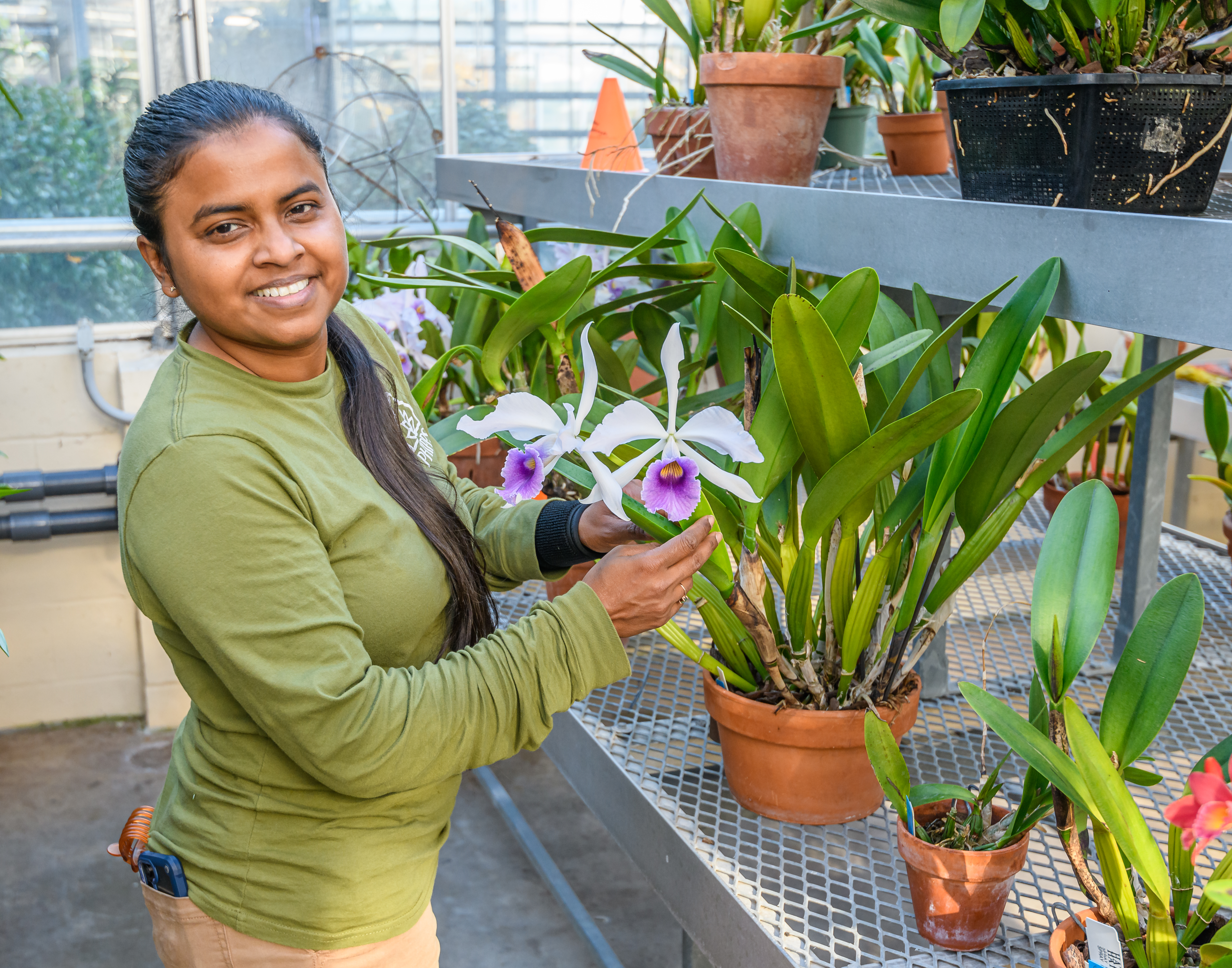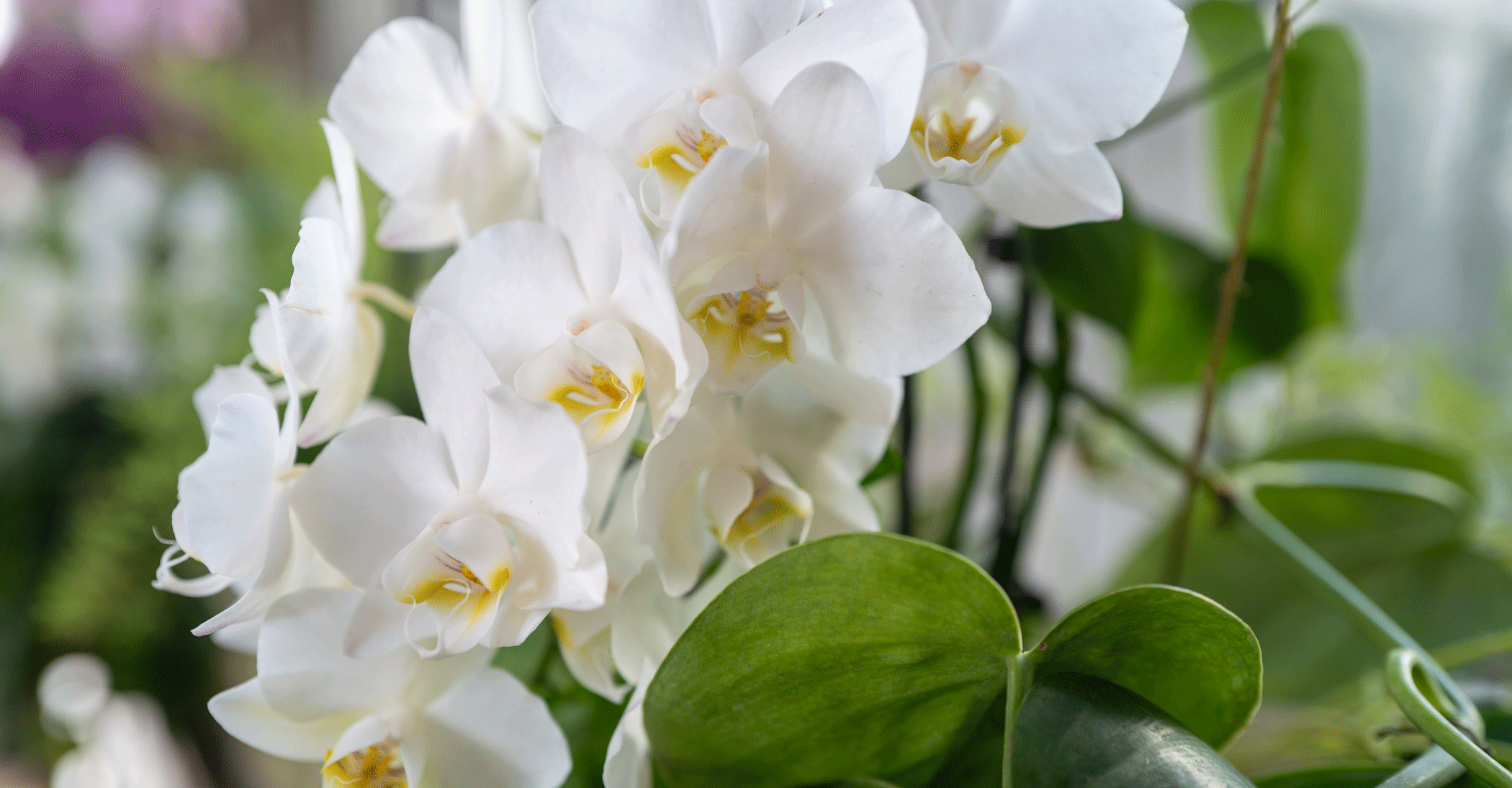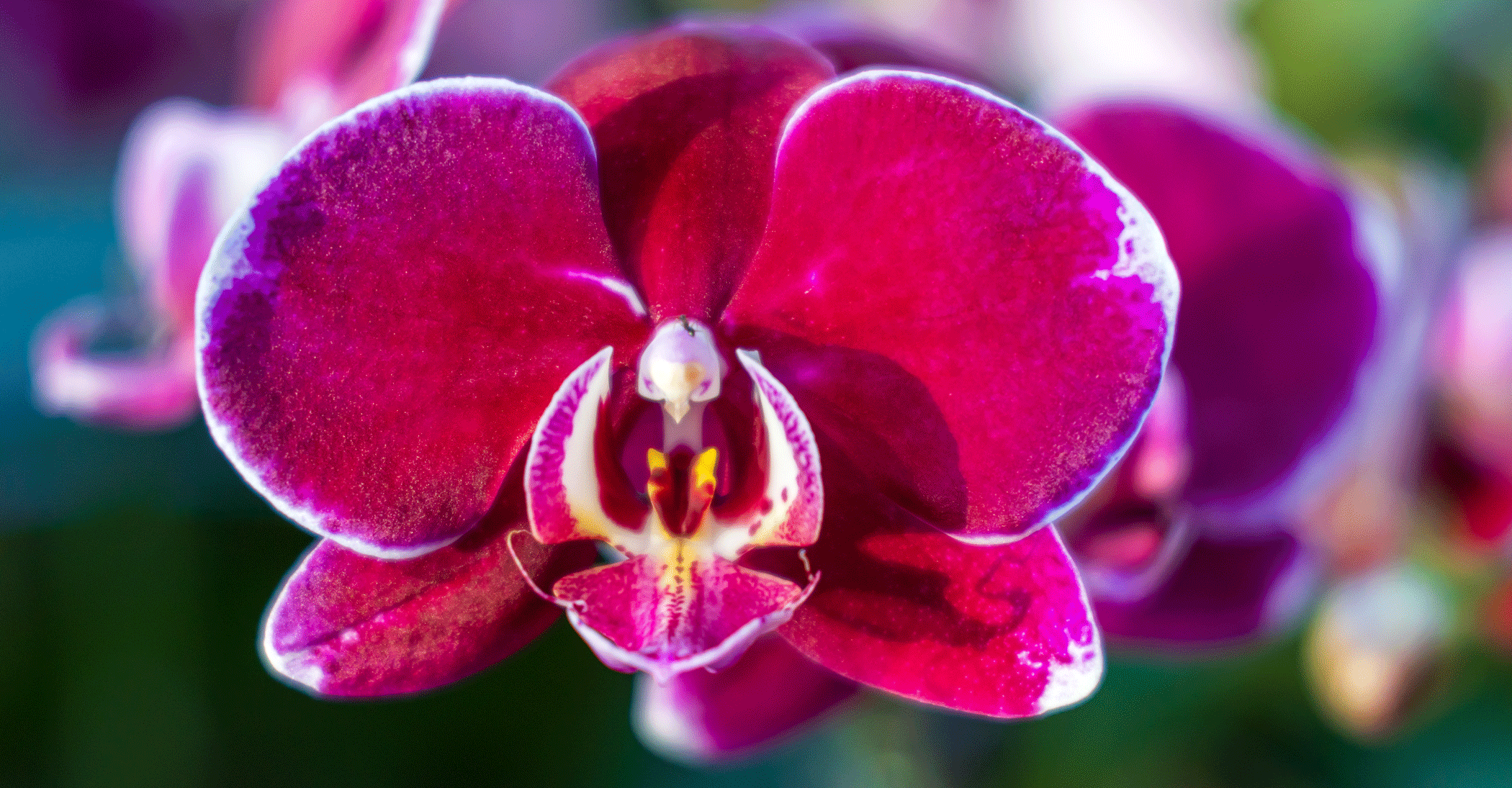Blog

Orchid Care at Home
Once you have experienced the vibrant colors and exotic fragrances in our Orchid and Tropical Bonsai Show: A Moment of Beauty, you may be inspired to bring a piece home with you. Luckily, the Shop at Phipps offers a wide variety of orchids to purchase! While these flowers look delicate and intimidating to care for, with a little attention and knowledge, you can have success growing orchids at home. Phipps Orchid Display Horticulturalist Thathmini Kularatna offers some advice to ensure your orchids flourish!

Orchids grow naturally on every habitable continent, thriving in a variety of climates and environments. Knowing what type of orchid you have is the key to success. Terrestrial orchids, such as the Lady Slipper orchid, grow in well aerated organic matter on the ground. The most common indoor orchids are epiphytes, meaning they grow on other plants, often clinging to the bark of trees. Orchids most typically grown as houseplants include Cattleya and Phalaenopsis, which are both epiphytes.
While there is no single growing medium that suits all orchids, the common orchid bark medium will work for the epiphytes. Thathmini suggests considering an environment in which the orchid grows in the wild and supplementing the bark accordingly. She suggests adding coco coir or pumice to augment the traditional bark medium. If your orchid requires more moisture try adding sphagnum moss, perlite or charcoal to your mix.
Since orchids are not grown in common potting soil, they do require a special watering technique. Thathmini suggests using a household sink to water the plant by running the water until it runs off the bottom of the pot. This prevents the minerals present in the water from accumulating in the bottom of the pot. Wait for approximately half an hour and then water again to saturate the bark. The key to proper watering is to allow the orchid to reach 80-90% dryness before watering them again! Overwatering is a common beginner mistake. Thathmini emphasizes to not water your orchids with an ice cube as this is a myth! Most indoor orchids are tropical plants so the cold can damage the sensitive roots.

All orchids like bright light, however, direct sunlight can burn their sensitive foliage, so choosing a spot near a sunny window is ideal. They also prefer ample humidity. Try using a pebble tray, a shallow tray with pebbles and a small amount of water, to keep the roots of the plant out of the water and creates the humidity that the orchids crave.
Orchids can bloom once or twice a year. Once your plant has bloomed and the flowers have withered, you should trim the inflorescence a few nodes. The inflorescence of an orchid includes the stem, buds and flowers, nodes. The nodes are easy to spot, they are the joints on the inflorescence where new flower stems can start. This can encourage a new flower spike, on a Phalaenopsis. If you have a Cattleya or Oncidium, trimming off the entire inflorescence is recommended to promote new growth.

Fertilizing your plants is important, especially in the summer when they are actively growing. There are many kinds of fertilizers including granules and liquids that will work for orchids. Osmocote granules can be added directly to the growth media since they are solid and will dissolve over time. When using liquid fertilizer, Thathmini suggests using half the recommended amount, as orchids do not have the same high fertilizer needs as other house plants.
When asked what orchid would be best to begin with Thathmini suggests a Phalaenopsis saying, “they are pretty easy to grow and are vigorous and resilient.” With this advice, you can create your own moment of beauty at home and enjoy orchids year-round!
Photos © Phil Johnson II, Paul Vladuchick and Paul g. Wiegman

